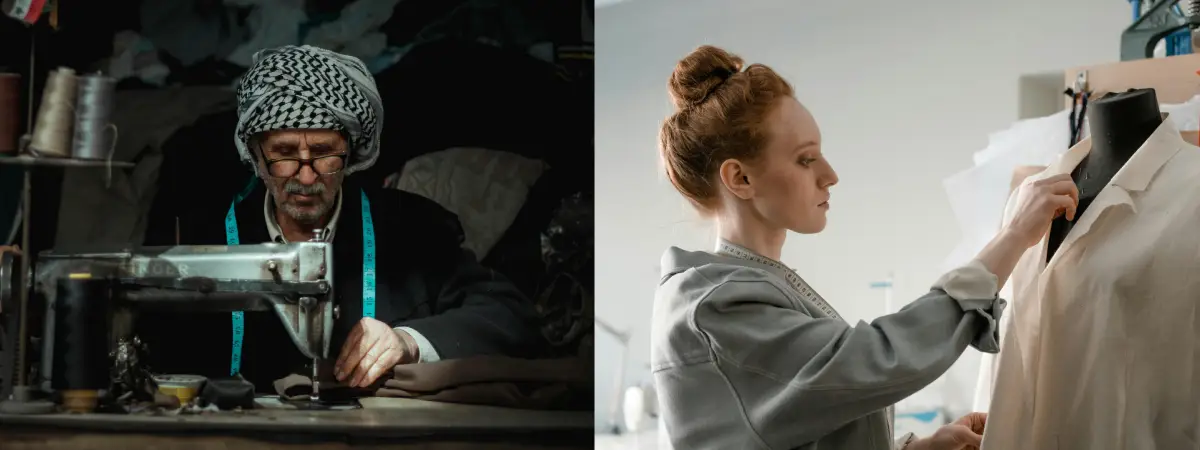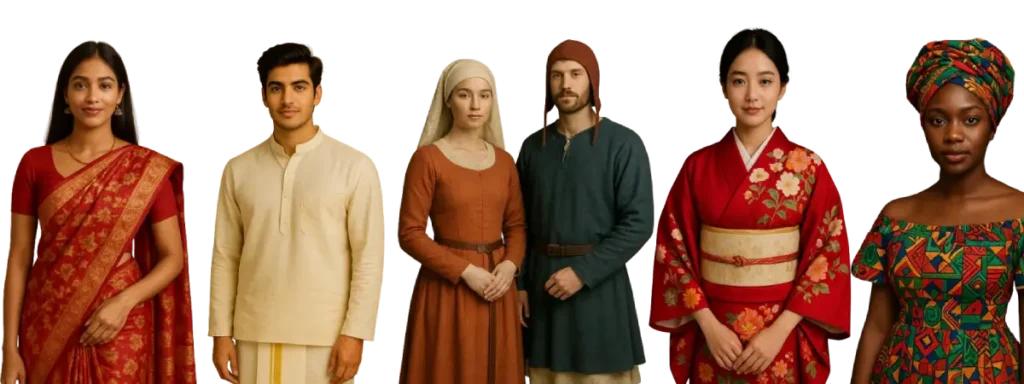See How Fashion Evolves Old Culture to Modern Trends
August 29, 2025

August 29, 2025

In this blog, we will look at how fashion has changed from old styles and traditional clothes to modern trends and cultural fashion. This change affects how we express ourselves in the 21st century.
Fashion is greater than style; it conveys our history, identity, and shifts in culture. From ancient cultures to modern worldwide fashion events, fashion evolves as society evolves, linking histories of heritage, traditions, and new trends. We don’t just look good for today’s attire; it has a long history of cultural influence and transformation.
Clothing was always a part of culture. Whether it was the royal dresses of kings and queens or the plain attire of peasants, traditional apparel was not created solely for wear and tear but for expressing social class, identity, and values.
Such as:

The clothes were more than just clothes; they were culture, handed down through generations.
Modern designers often borrow from the culture of the past. Classic fare will often transcend time and find its way back into modern day fashion, signaling that tradition is always in.
This combination of epochs illustrates how styles evolve through points in time, connecting history and the present.
With globalization and new media, style has become a way for cultures to speak to each other. You don’t have to relocate to Japan to wear a kimono-like dress or go to Africa to feel that the vibrant prints and cultural fashions are ubiquitous.
But this worldwide publicity has its challenges and opportunities:
The important thing is to appreciate and not exploit, experiencing the richness of cultures and giving credit and due recognition.
Even today, traditional clothing is important in the age of fast fashion. People always incorporate cultural clothing at fests, weddings, and other celebrations in order to preserve their heritage. In the meantime, fusions have also made traditional clothing more practical for use in the modern age.
Such as:
Such alterations accommodate changing clothing trends, allowing one to retain one’s heritage while enjoying today’s comfort and styles.
Another key factor in fashion’s evolution is technology. From hand-stitched garments in old culture to AI-driven designs today, the transformation is revolutionary. Digital Fashion Shows: Virtual runways broadcast cultural fashions worldwide.
Sustainable Materials: Reusing old organic materials like bamboo and hemp, new sustainable methods of producing them are being introduced.
This blending of the old and new demonstrates that fashion is always evolving continually borrowing from earlier times to develop new creations for the future.
In a fast-fashion and mass-production world, cultural style is distinctive because it’s one-of-a-kind and authentic. Dressing in clothing based on classic styles makes a statement it respects our heritage and connects us to tales that are greater than us.
And at a moment when individuality is everything, consumers are looking toward classic trends that will distinguish them from common trends. Vintage apparel, secondhand shops, and cultures-driven lines are popular because history and today’s style come together.
Fashion will continue to merge heritage culture and today’s trends. Designers will continue to embrace more sustainable methods while collaborating next to heritage artisans. Cultural points of reference will continue to be important, yet revisited and reinvented for new periods.
We shall anticipate:
The history of style ratifies the fact that while trends come and go, cultural style has no age.
Fashion is not only about a pleasing appearance, it is about the exchange of a story. Whether it concerns traditional cultural attire or the latest trends in international fashion, each look has a history, originality, and cultural relevance. The style changes, yet it also respects that from whence it came and welcomes new creativity. In donning cultural attire, we are not merely donning clothing; we are preserving a heritage.